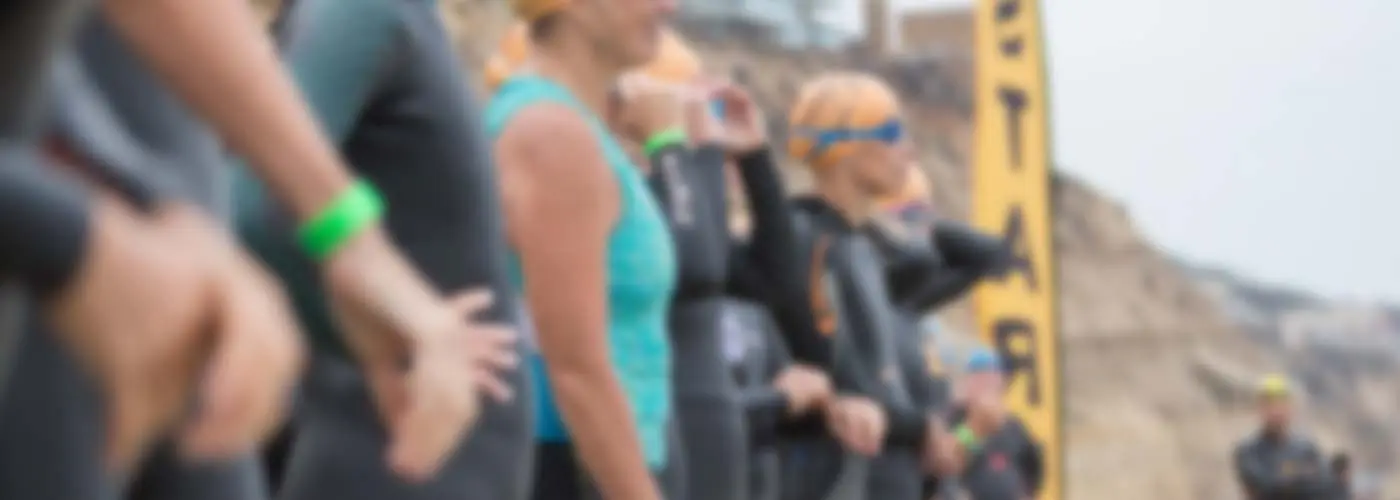
"Start warm, even if you're in a cold house," Dave Scott says. Whether you take a warm shower, drink hot coffee, or lay your clothes in front of a space heater, allow extra time for your "warm up" before each workout.
When you're cold, "your body naturally sheds blood away from your extremities to warm your core," says Scott, who coaches athletes in Boulder, Colorado. He points out that people with low body fat (i.e. triathletes) are more prone to the cold than other folks with a "thicker coat". Warming up before heading outside "gets the blood flow back to the extremities."
More: Cold Weather Training and Your Body
Once you're moving, your body will generate enough heat to keep you warm. So whether you're heading out for a swim, bike or run, Scott says you should keep moving. When you're warm you have "better joint mobility, enhanced blood flow and warmer muscles," says Scott.
Of course there are a few more things you can do to stay comfortable in the cold, and they vary sport to sport. A lightweight long-sleeve shirt might work well on a run, but probably won't suffice on the bike.
Here are some sport-specific tips from Dave Scott to help you get ready for your winter workouts:
How to Stay Warm at the Pool
Scott's athletes train in an outdoor pool all year. In the winter, they get in the Jacuzzi before heading outside. They also wear big swim jackets with hoods, wrap themselves in towels, and put flip flops on their feet to make the 30-yard trek across the pool deck.
Once you're in the water, you can double up on your swim caps, using a full neoprene head cap on the outside. Some people even wear wetsuits for the first couple of laps, and then take them off as they start to warm up.
More: Why Do I Gasp When My Face Hits Cold Water?
How to Stay Warm on the Bike
"Lots of people wear three-quarter-length tights with their calves exposed; it doesn't make sense to me," says Scott.
Cover up: Wear full-length tights, compression socks and gloves. As the temperature drops (mid 20s and below), you should also have your face and neck covered. Even in temps up to the 60s Scott wears full-finger gloves. You can double up with a liner and a mid-layer glove—that helps reduce the bulk so the gloves don't restrict movement.
Layer up: Wear a breathable first layer, a warmer second layer and a jacket. The thickness of the second layer and/or jacket will vary based on the temperature.
Finally, add toe covers and nylon booties. Scott suggests wearing neoprene booties in really cold weather.
More: 7 Tips to Ride Through Winter
How to Stay Warm on the Run
Since you're moving slower on the run than you are on the bike, it's not as important to cover your face. You should, however, cover up the rest of your body and use layers.
Scott recommends wearing full-length tights, and up to three layers on the really cold days. Wear shirts that have a quarter-inch zipper. This helps you more easily regulate your core temperature.
"Just moving the zipper a few inches can help dissipate heat if needed," says Scott. "When you turn back into the wind, you can zip back up."
Scott doesn't use winter running shoes but he does recommend a heavier wool-blended sock. Just like the rest of your body, if your toes start warm, they'll stay warm.
More: Tips for Running Outside During Winter
 Train to race: Sign up for your next triathlon.
Train to race: Sign up for your next triathlon.
About the Author

Get ACTIVE on the Go


Couch to 5K®
The best way to get new runners off the couch and across the finish line of their first 5K.
Available for iOS | Android








Discuss This Article